Unity College


Getting a college diploma has become a rite of passage in modern American culture. But that fancy piece of paper can oftentimes come with a hefty price tag, and it’s only going up. People have to bite their nails and check their bank accounts as they make decisions about colleges that will not only give them the best education within their chosen field, but will also be the most cost effective.
Because so many people are in the market for a college education, lots of data has been collected on factors like tuition, graduation rates, and employment rates in order to try to determine the overall financial value of an institution. Accordingly, the data company PayScale annually ranks colleges in terms of return on investment (ROI) and determines which schools provide the best investment based on the difference between the median pay of a college graduate over 20 years and the median pay of a high school graduate over 24 years. And the data says that attending these schools simply isn’t a good financial choice…
Saint Augustine’s University


Unity College, nestled in a beautiful rural setting in Unity, Maine, is a private liberal arts school that has a special emphasis on those who wish to study sustainability, environmental studies, and natural resource management. While these are all good and noble pursuits, Unity College demands a high price for such an education and, to top it off, a pretty poor ROI.
Yearly tuition is nearly $38,000, meaning that the 60% of students who graduate in four years—out of less than 800 students at the college—end up spending over $150,000 over the course of their education. This means that the 20-year net return on investment at Unity College comes out to -$82,100.
Stillman College


Located in Raleigh, North Carolina, Saint Augustine’s University costs over $32,000 a year, making a four-year degree worth $129,000. While $32,000 a year certainly isn’t the biggest tuition tag out there, it’s a tough pill to swallow when the university has less than 1000 students at a time and only 23% of enrolled students manage to graduate in four years.
Because of the high cost, the low graduation rates, and its lack of notoriety, graduates of Saint Augustine’s University can find themselves graduating with a fair amount of debt and not many job prospects. The ROI of Saint Augustine’s University is about -$77,700. And that’s not an amount one can simply shake a stick at. It’s no wonder that places like Saint Augustine’s University are seeing declined enrollment numbers.
Agnes Scott College
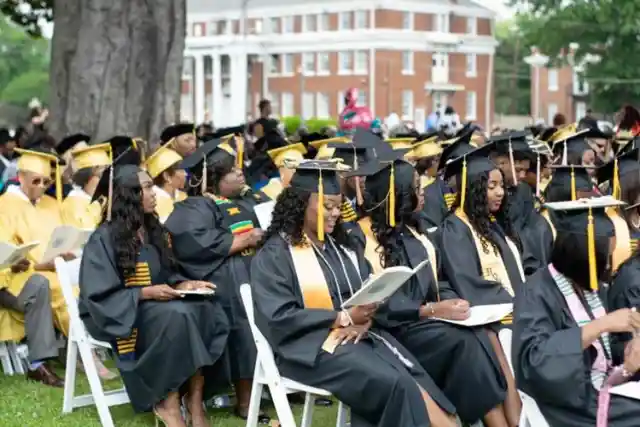
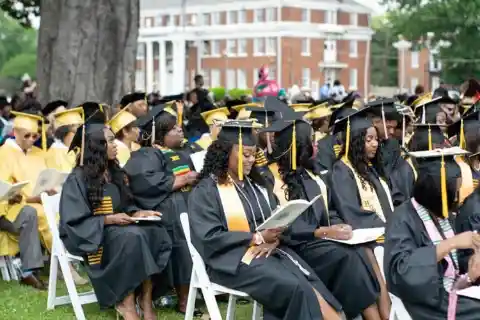
Located in the city of Tuscaloosa, Alabama, Stillman College is an even smaller college than many of the state’s already small institutions, with only 615 enrolled students in the fall of 2018. Stillman College awards the Bachelor of Arts and Bachelor of Science degrees in 17 disciplines/majors housed within three academic schools and is accredited by The Southern Association for Colleges and Schools Commission on Colleges.
Stillman College has a mere 42% acceptance rate, and an even slimmer 11% graduation rate. And its ROI is smaller, too. Spending four years at Stillman College costs more than $24,000 a year, totalling $98,700. With such low graduation rates, Stillman College offers its graduates an ROI of -$80,400. While the ideas of smaller classrooms and more professor interactions are idealized, they come with a very real and very hefty price tag.
Wilson College


A historic women-only college, Agnes Scott College is a private women’s college in Decatur, Georgia. With approximately 1,000 women enrolled, Agnes Scott College is considered one of the Seven Sisters of the South—seven historic institutions that championed women’s education. Some pros of Agnes Scott College include a cute mascot (the Scottie dog) and a high likelihood of graduating in four years (70% of students do).
But the downsides of Agnes Scott College are still pretty significant. Attendees of the institution are expected to pay $50,000 every year in tuition, and it doesn’t take a rocket scientist to figure out that that’ll put you back by $200,000 in four years. Not only that, but graduates will end up with an average return on investment of -$21,600.
Emory & Henry College


Historically single-gender colleges can have a particularly tough time in the modern market of higher education. Wilson College, a historically women-only college in Chambersburg, Pennsylvania, was established in 1869, largely funded by Sarah Wilson. The institution only began to accept male applicants in 2013. This was probably born out of keeping up with the modern times, but also with modern costs.
With a 300-acre campus, Wilson College requires a substantial amount of up-keep. Unfortunately, it seems that the students bear a part of this financial load. Tuition at Wilson College runs at about $40,000 a year. The college has a graduation rate of about 40%. Put these two figures together, and the 20-year return on investment in Wilson College amounts to -$86,700.
Adrian College


Here’s a college in Virginia that you may have actually heard of before. But probably because you’re thinking of a different place, Emory University, that’s located in Georgia. The campus of Emory & Henry College in Virginia comprises 335 acres of Washington County, which is part of the Appalachian highlands of Southwest Virginia. Unfortunately for Emory & Henry College, its statistics are much less rosy than those of its famous name-sharer.
According to PayScale, the ROI at Emory & Henry College is a whopping -$91,300. Emory & Henry has such a large negative ROI because of its $179,000 four-year price tag—that’s over $44,000 a year—and low graduation rates that fluctuate around just 50%. Emory & Henry College may be the oldest college in Southwest Virginia, but that hasn’t helped its marketability to dollar-conscious prospective students.
Shaw University


Considered a “modern liberal arts college,” Adrian College in Adrian, Michigan was named as the “#1 Up-and-Coming College in the Midwest” by the U.S. News & World Report. The college has its origin as a theological institute founded by Wesleyan Methodists at Leoni, Michigan in 1845. After some mergers and name changes, the new Adrian College emerged. While Adrian College offers 40 degrees, it also offers institutes.
Institutes are on-campus communities meant to support different areas of interest, like Study Abroad and Sports Medicine. But what Adrian College really needs is a financial support institute. Students at Adrian College are expected to pay $47,000 a year for their education. Of the 53% who graduate, this means that they can expect a 20-year return on investment of -$37,600.
Paine College


Shaw University is known for being the first historically black university in the Southern United States at the time that it opened in 1865. Shaw University is known as the “mother of African-American colleges in North Carolina,” as many of its alumni went on to establish other black universities. Located in Raleigh, North Carolina, Shaw University remains a private, Baptist, liberal arts college.
The cost of yearly tuition at Shaw University is nearly $30,000 a year. And with a graduation rate of 25%—better than some in the state, but still less than stellar—it quickly becomes apparent that Shaw University is not a great choice for those looking to save money. The 20-year return on investment at Shaw University is, as estimated by PayScale, less than -$93,000. This is a hefty price that many young adults can’t afford today.
Mississippi Valley State University
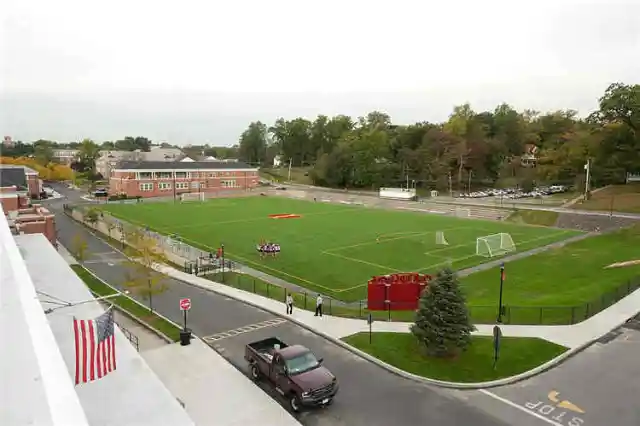

Paine College is a private Methodist school in Augusta, Georgia, that is affiliated with the United Methodist Church and Christian Methodist Episcopal Church. The college has had its fair share of woes as it’s battled financial trouble over the recent years after losing its accreditation through the Southern Association of Colleges and Schools in 2018. But for the students at Paine College, the picture isn’t much better.
Paine College has an acceptance rate of only 25% and a graduation rate of less than 20%. On top of that, its overall 20-year return on investment is a staggering -$94,700. While the average student at Paine College pays less than at some other private colleges—about $24,000 a year—the price is still a costly consideration for students who apply to Paine College.
Johnson University


Mississippi Valley State University is one of those schools that’s had the knack of attracting famous people before they were famous—the school is known for its excellent football coaching and marching band prowess and, consequently, has turned out some pretty famous professionals since its opening in 1950. So it’s a little mind-boggling when one takes a minute to look at the numbers…
The financial numbers make one wonder why anyone would accept the risk of attending the university in Itta Bena, Mississippi. While tuition at Mississippi Valley State University isn’t the worst—coming out to “only” $19,000 a year—the return on investment is pretty wince-worthy. At the absolute bottom of PayScale’s list, Mississippi Valley State University students experience an ROI of -$174,800.
Brewton-Parker College


Johnson University, originally named The School of the Evangelists when it was established in 1893, is located near Knoxville, Tennessee in the small town of Kimberlin Heights along the French Broad River. The Kimberlin Heights campus has 820 students, both undergraduate and graduate. Johnson University also has a satellite campus in Kissimmee, Florida. Altogether, Johnson University offers over 70 possible degrees, including its online programs.
The university’s website boasts that the tuition is less than half of the national average, but students still have to pay a fair bit. On average, students at Johnson University pay $22,450 a year. And it takes anywhere between four and six years to graduate for those who do graduate. Overall, this means that Johnson University ends up having an ROI of -$97,700.
Cazenovia College


Located in the quiet Southern town of Mount Vernon, Georgia, Brewton-Parker College offers prospective students a true small-town experience. Like, really small—small enough that the student body of Brewton-Parker College nearly doubles the population of Mount Vernon, making a grand total of about 2,500 people altogether. Brewton-Parker College is affiliated with the Georgia Baptist Convention and celebrated its centennial in 2014.
On average, students of Brewton-Parker College pay over $28,000 a year for their education. Not surprisingly, this makes the ROI of Brewton-Parker College significantly unappealing. PayScale estimates the ROI at Brewton-Parker College to be -$92,200. This is in part because of the small size of the institution, but in much larger part because the graduate rate at Brewton-Parker College is a mere 17%.
Andrew’s University
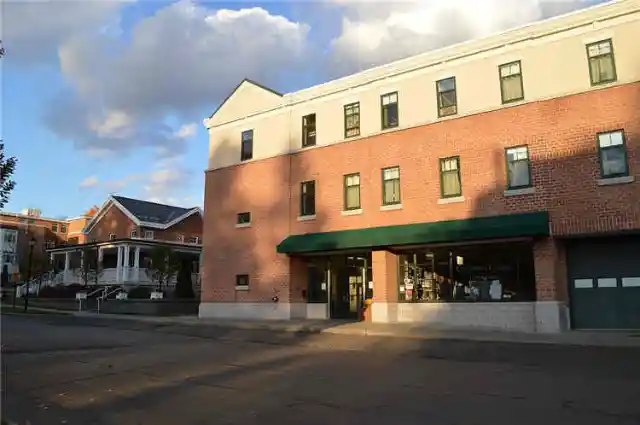
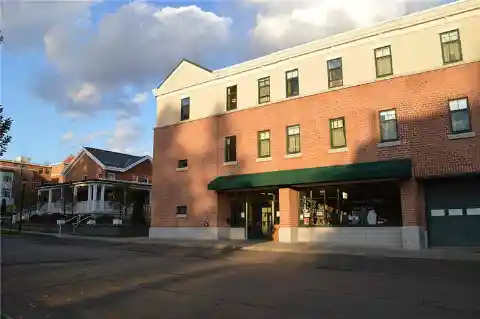
Another small, private, liberal arts college in a small town, Cazenovia College is located in the Syracuse area of Upstate New York. The area is lively, with relatively easy access to points of interest for those planning to make a home in New York, but that’s not a great reason to choose a school. In fact, upon further inspection, Cazenovia College is hardly ideal for students who don’t want debt.
Cazenovia College offers a comprehensive liberal arts education with academic and co-curricular programs devoted to developing leaders in their professional fields. While the college has a high acceptance rate—90%—it has a high cost as well. Over four years, students have to pay over $180,000 in tuition. And for many, the high cost of investment doesn’t result in a high yield, seeing as the ROI at Cazenovia College is -$98,600.
Livingstone College
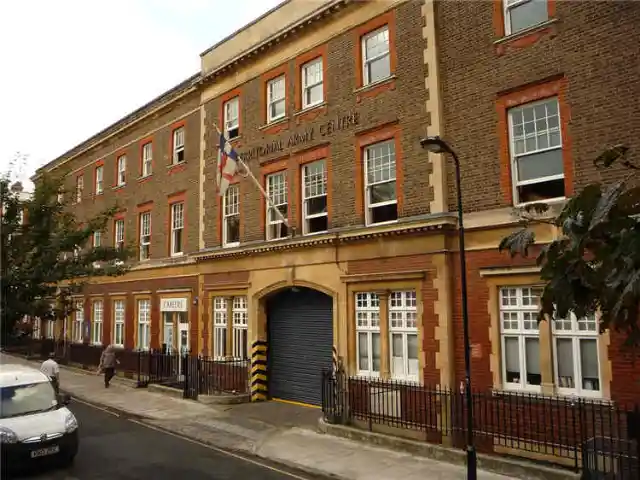
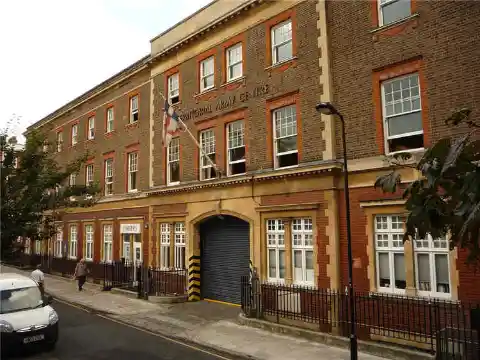
Impressive-sounding names, while historic, are usually a tip-off to prospective students that the institution also requires a lot of money. And St. Andrew’s University in Laurinburg, North Carolina is by no means an exception. Acquired by Florida-based Webber International University in 2011, St. Andrew’s University remains a private liberal arts school (it was one of the first undergraduate institutions to offer a BFA in creative writing).
But now let’s get to the part that prospective students care about: the cost. St. Andrew’s University clocks in at around $42,000 a year for tuition for its 600 students. Out of those 600, the graduation rate is less than 30%. As one would expect, this doesn’t mean good news for the ROI at St. Andrew’s University, which comes out to be -$98,800.
Benedict College
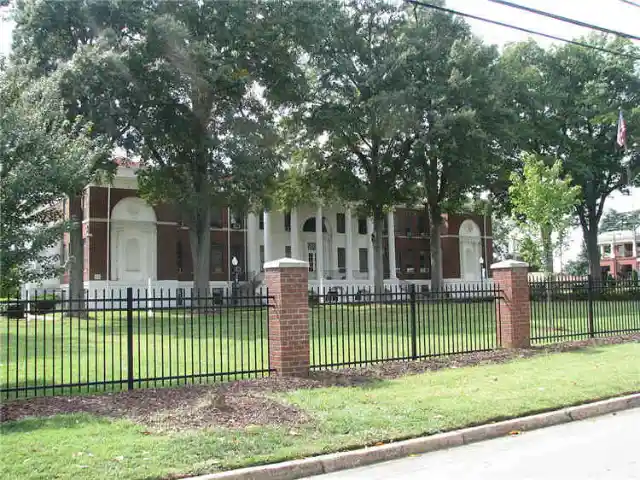

Livingstone College is a historically black Christian college located in Salisbury, North Carolina that’s affiliated with the African Methodist Episcopal Zion Church. Originally named the Zion Wesley Institute in 1879, the institution changed its name in 1887 to honour the famous African missionary David Livingstone. The Livingstone College Historic District is also a national historic district and was listed on the National Register of Historic Places in 1982.
Livingstone College offers a variety of programs to its 1,200 students. It also has a School of Hospitality Management & Culinary Arts that is located off-campus in a renovated building that was formerly a Holiday Inn. Tuition at the college costs $27,000 a year, and only 25% of the students at Livingstone College graduate on time. Consequently, the ROI at Livingstone College leaves much to be desired at -$58,300.
Morris College
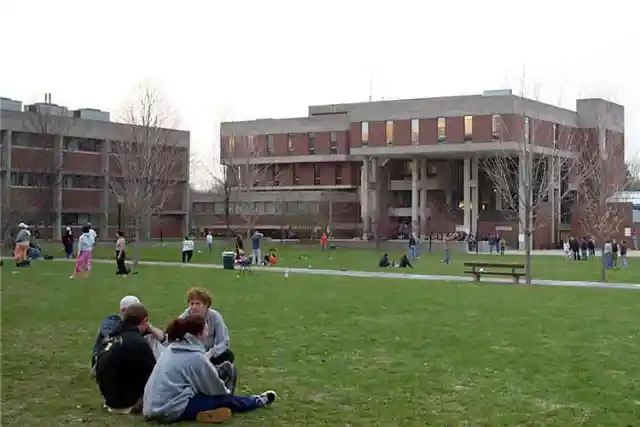

Another historically black institution, Benedict College was established in Columbia, South Carolina in 1870 by the Baptists on the land of what used to be a 110-acre plantation. Benedict College has been criticized for its lack in providing sufficient academic standards, especially because of its so-called Success Equals Effort (SE2) policy, which awards grades on the basis of effort and knowledge to all freshman and sophomore students.
Being in a larger city—the state’s capital, in fact—Benedict College also has a larger student body of over 2,000 pupils. And, on average, those 2,000+ students are paying $30,000 a year. Unfortunately, the graduation rates at Benedict College remain fairly low, with 30% managing to graduate. Consequently, Benedict College’s ROI is six figures in the red at -$105,600.
Montserrat College of Art
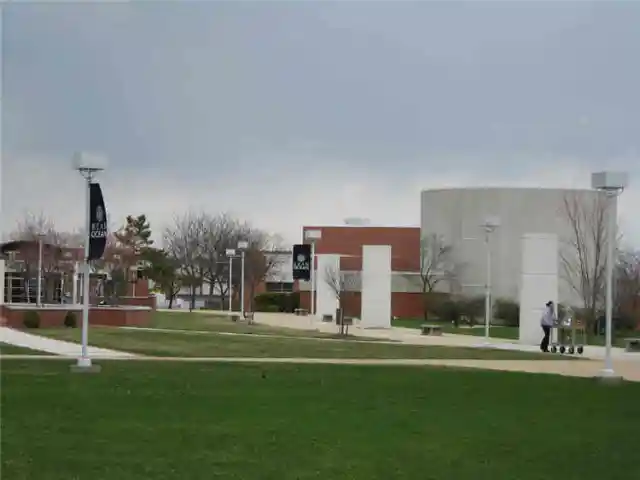
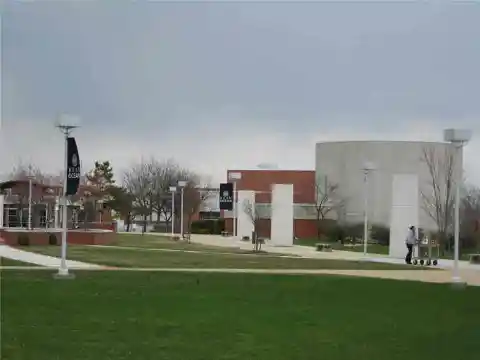
Much like Benedict College, Morris College is a historically black college located in Sumter, South Carolina. Morris College was founded in 1908 by James J. Durham, initially as a grade school, high school, and college. The college is named after the Reverend Frank Morris because of his outstanding leadership throughout the African American community of South Carolina. Today, Morris College now offers degrees in 20 areas of study.
While the tuition at Morris College is lower than some comparable colleges—just $23,000 a year—it still has a low graduation rate of 31%. But that 31% of students will be spending the next 20 years trying to dig their way out of financial debt, and they won’t have much success; the projected ROI at Morris College is -$106,800.
Warren Wilson College
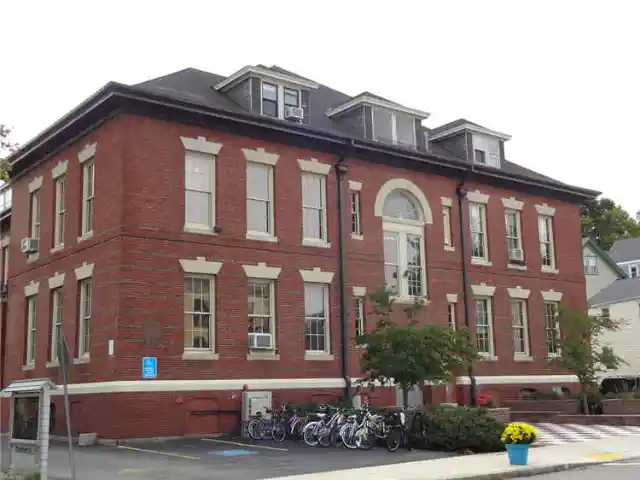
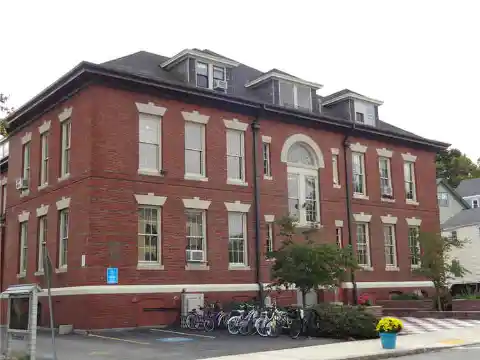
Montserrat College of Art is a fairly exclusive, state-of-the-art institution for aspiring visual artists that is located in Beverly, Massachusetts. Art tends to get a bad rap as a career choice (cue all the “starving artist” jokes you’ve ever heard), but aspiring artists at Montserrat College of Art tend to have an especially rough time making a liveable career after graduation.
Despite a somewhat higher graduation rate than some—over 50% of students graduate in four to six years—the tuition still creates a money sinkhole for students. Yearly tuition at Montserrat College of Art is just over $42,000 a year, making a grand total of $169,000 over four years. After graduation, job prospects are slim, making the ROI at the institution -$107,400.
Columbia International University
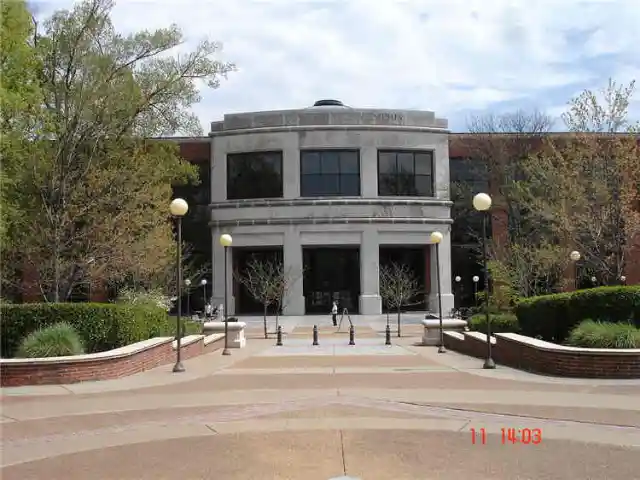
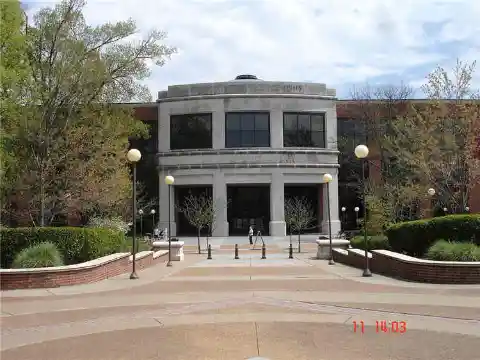
Warren Wilson College is considered one of the few genuine work-study schools left in the country. Located in Swannanoa, North Carolina (affectionally nicknamed “Swannanowhere” by locals), Warren Wilson College has a heavy emphasis on environmental studies and natural resources. Students at Warren Wilson spend time between learning in the classroom, working on the college’s large swaths of farming land in the Appalachian Mountains, and performing acts of community service.
The purpose of a work-study program is to help financially limited students who commit to working a certain number of hours each semester in order to cover part of their tuition costs. But tuition is steep, and potential jobs after graduation don’t quite make up for the loss of four years. Tuition comes out to $184,000 over four years, and the resulting ROI is -$15,400.
Martin Luther College
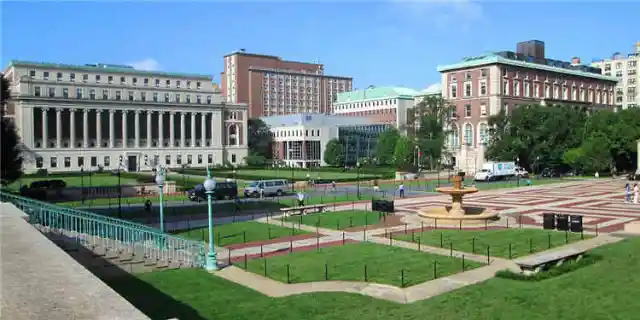

Not to be confused with Columbia University in New York, Columbia International University is another private institution in Columbia, South Carolina (less than 10 miles from Benedict College, in fact). To be fair, Columbia International University has been ranked as the number one college in South Carolina and offers a wide variety of programs, as well as a 68% graduation rate.
But that doesn’t help its case as a money-smart option, according to PayScale. The small number of students at Columbia International University pay over $33,000 a year for their education and, upon graduation, find themselves hard up to land a job that can make up for the cost of their education. PayScale judges the ROI at Columbia International University to be -$115,700.
Rust College

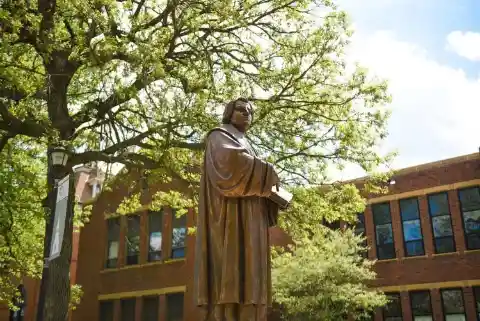
For those who are unfamiliar with the name, Martin Luther was a German theologian from the Middle Ages and is largely credited with being the father of the Protestant Reformation. Owned and managed by the Wisconsin Evangelical Lutheran Synod, Martin Luther College students do not fare as well in their post-graduation efforts as the namesake of their school would suggest.
One of the financial factors that can be especially difficult for students is that all students are required to live on campus for their entire time at the institution. For anyone who’s been to college, room and board on campus is notoriously expensive. Students who pay $23,000 a year—of whom over 70% graduate—can expect an ROI of -$123,200.
Claflin University


Another private liberal arts college, Rust College is the next college on the list of colleges that aren’t worth the money and time. Rust College, a historically black college in Holly Springs, Mississippi, is the second-oldest private institution in the state of Mississippi. But that historicity doesn’t help Rust College much when it comes down to the figures of tuition and ROI.
While Rust College offers a substantial amount of financial aid and keeps the yearly cost of tuition fairly low—less than $16,000 a year—its graduation rates remain low as well, with just 18% graduating after four years out of the 43% of applicants that are accepted at the august institution. This makes the ROI at Rust College a massive -$97,100.
Wheelock College
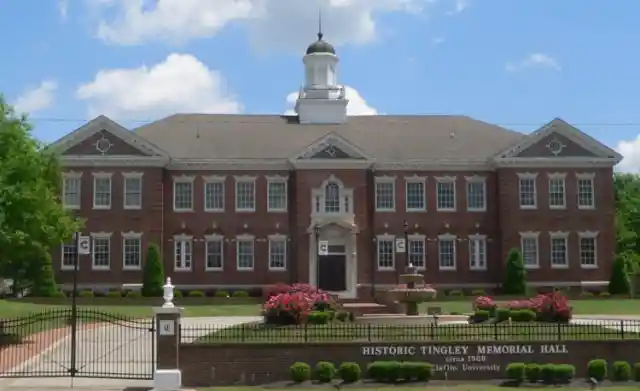
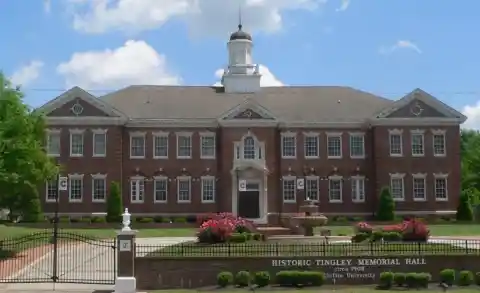
In 1884, the first two black women in the United States were awarded college diplomas at Claflin University in Orangeburg, South Carolina. Founded in 1869 after the American Civil War by northern missionaries for the education of freedmen and their children, Claflin University offers bachelor’s and master’s degrees. Claflin is the oldest historically black college or university in South Carolina and touts itself as the first college in the state to welcome all students regardless of race or gender.
But no amount of historicity can cover up the fact that Claflin University is expensive for its students. Ultimately, Claflin doesn’t afford much hope for its students when it comes to finding a financially successful job, and only 56% of students graduate on time. Yearly tuition runs around $32,000 a year, and Claflin University graduates can expect an ROI of -$133,900.
Voorhees College
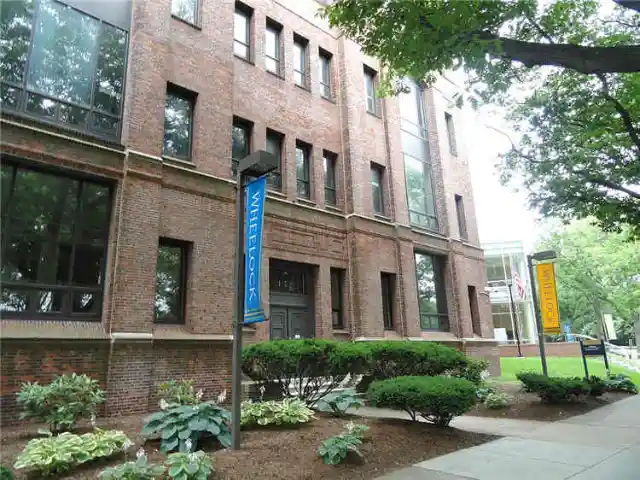

Originally a teacher’s school, Wheelock College is located in Boston, Massachusetts. Founded in 1888 by Lucy Wheelock as Miss Wheelock’s Kindergarten Training School, it offered undergraduate and graduate programs that focused on Arts & Sciences, Education and Child Life, and Social Work and Family Studies to improve the lives of children and families. Today, the college remains as an education studies school after being merged with Boston University’s School of Education.
While education is a hugely underserved public service, it’s tough for would-be teachers when they see the $50,000 price tag that makes up just a year’s worth of tuition at Wheelock College. What’s more, teachers aren’t paid enough and, combined with the hefty price of attendance at the school, this means that Wheelock College graduates see a -$140,700 return after 20 years.
Talladega College
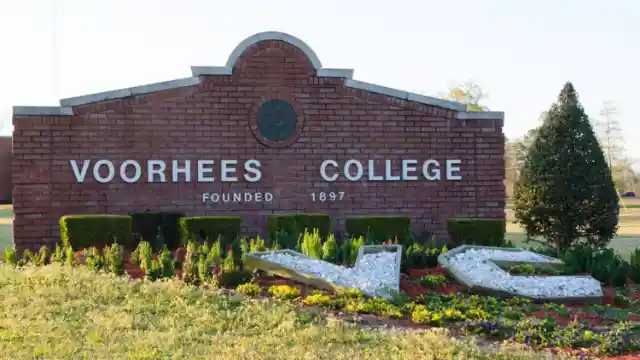
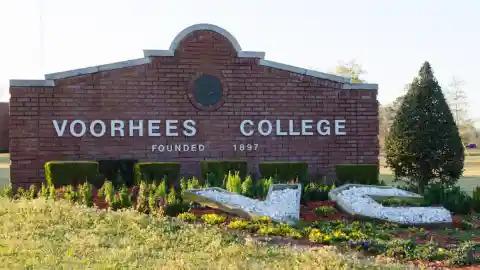
In 1897, Elizabeth Evelyn Wright founded Denmark Industrial School for African Americans. Located in a rural area in the small town of Denmark, South Carolina, Voorhees College was modeled off of the well-known Tuskegee Institute of Alabama. The college has had a rocky past, most notably including a time in 1969 when more than 500 students at the small college protested against the administration and the campus was occupied by 75 armed students.
Voorhees College has come a long way since 1969, however, and is held in good standing today. While a well-reputed school that’s popular enough with its students, the fact that Voorhees College graduates do not find themselves facing a bright financial future is a not-so-popular reality. Students pay just under $25,000 a year for their education. According to PayScale, the average 20-year return on investment for Vorhees College graduates is about -$153,000.
North Greenville University


Though an unfamiliar name to many, Talladega College has, in its favor, an excellent marching band (like, excellent enough that they’ve played at presidential inaugurations). Talladega College is also the oldest historically black college in the state of Alabama. The campus consists of 50 acres with 17 primary buildings, as well as 32 campus buildings that are listed on the National Register of Historic Places.
However, excellent marching bands and a multitude of historic buildings do not an affordable college make in the quaint southern town of Talladega, Alabama. For the costly sum of $22,000 a year, graduates of Talladega College can, on average, expect to lose more than $156,000 by the time they’ve finally graduated and been in the work force for 20 years.
Lindsey Wilson College
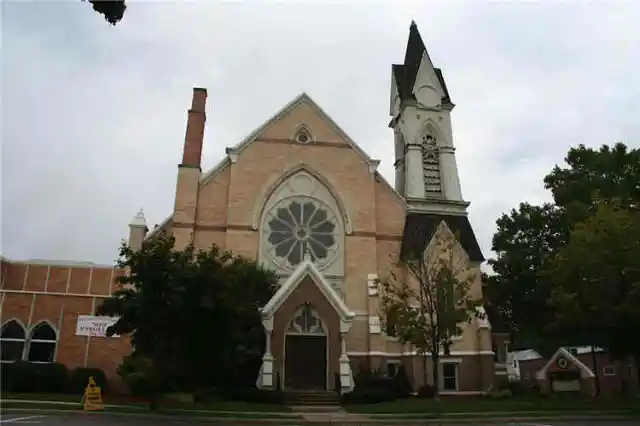
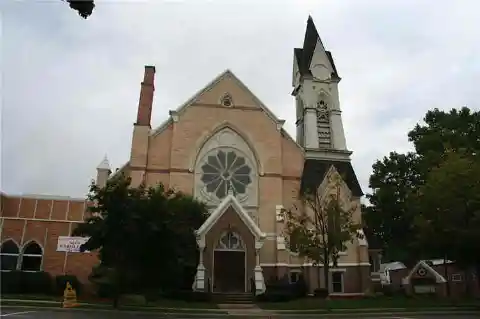
Located in Tigerville, South Carolina, in the beautiful Mountain Bridge Wilderness Area between South Carolina and North Carolina, North Greenville University is a private Baptist school. The university offers both undergraduate and graduate degrees to its 2,500 students. North Greenville University is associated with the South Carolina Baptist Convention and the Southern Baptist Convention and accredited by the Southern Association of Colleges and Schools.
North Greenville University is the most interesting thing to be found in the small town of Tigerville—the town itself has about 1,500 residents, not including university students—but even then, students may find good reason to give it a pass. In order to get a degree, students have to be willing to take on the burden of a -$62,100 return on investment after 20 years. This is largely due to high tuition costs—$32,000 a year—and slim chances of getting a job after graduation.
Maine College of Art
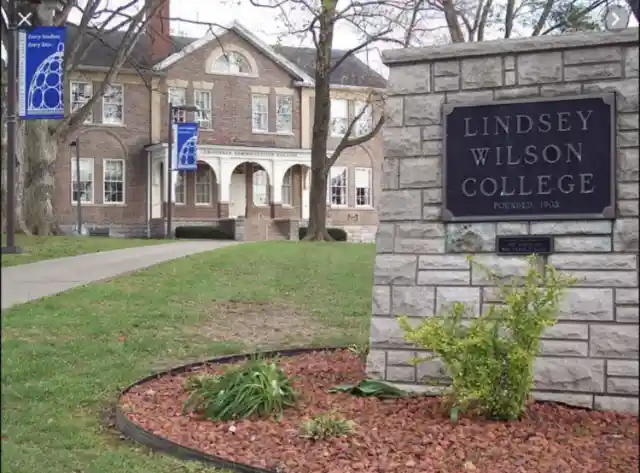
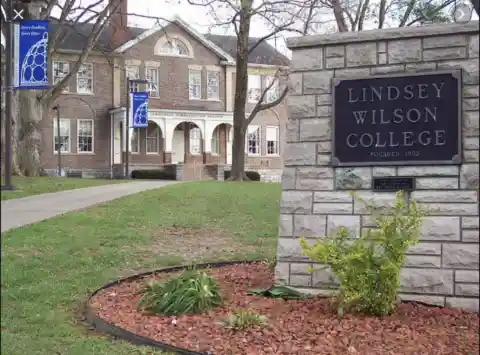
Lindsey Wilson College is a United Methodist college in Columbia, Kentucky. The private non-profit university offers degree programs at the associate, bachelor’s, master’s, and doctoral levels (the 2019 graduation included the confirmation of the first doctorate degrees in counselor education and supervision—the first doctoral degrees to be awarded in the history of the liberal arts college). In addition to these degrees, Lindsey Wilson College also offers a variety of online programs.
For $38,000 a year, students at Lindsey Wilson College have the chance to play on highly ranked varsity sports teams—Lindsey Wilson College is known for having turned out some top-notch professional athletes. But students at Lindsey Wilson College can also expect to have poor post-graduation success in the job market. According to PayScale, the ROI at Lindsey Wilson College turns out to be -$160,800.
Miles College
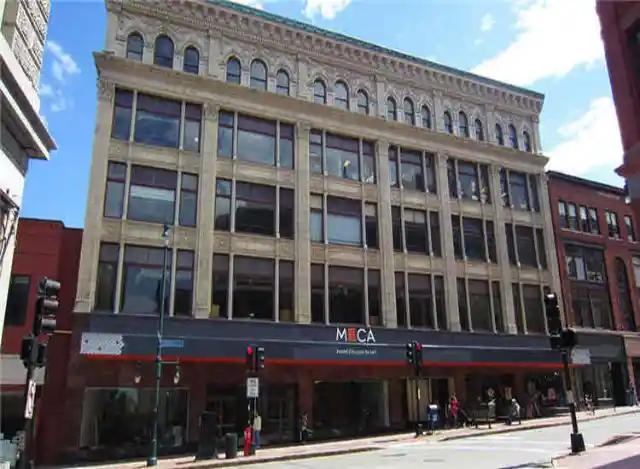
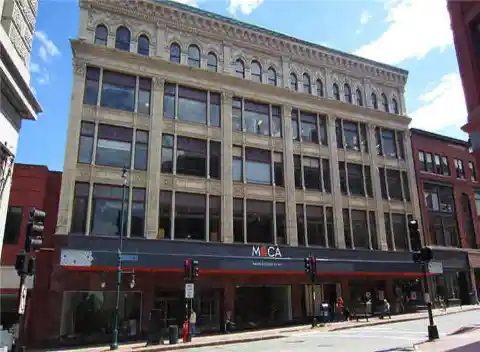
Maine College of Art, located in the cool city of Portland, Maine, is considered an excellent school for the arts, sharing good company with prestigious art schools like Rhode Island School of Design (RISD) and Savannah College of Art and Design (SCAD). Maine College of Art even has its own nifty acronym: MECA. But such a prestigious institution costs a pretty penny—a very pretty penny, in fact.
Over four years, students enrolled at Maine College of Art pay a total of over $184,000—that’s $46,000 each year—and find themselves in deep financial trouble 20 years down the line. Graduates of Maine College of Art lose, on average, 10% of their investment every year, meaning that the ROI at Maine College of Art comes out to -$163,600.
Campbellsville University
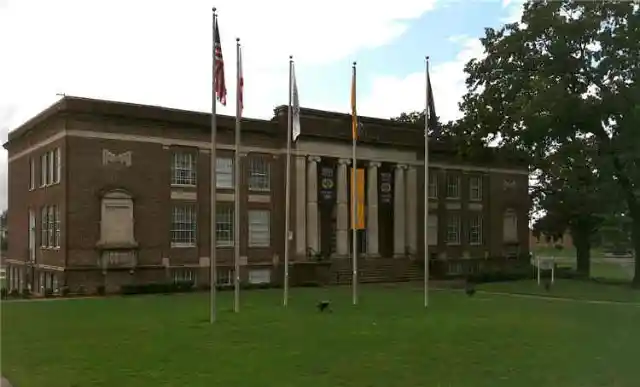
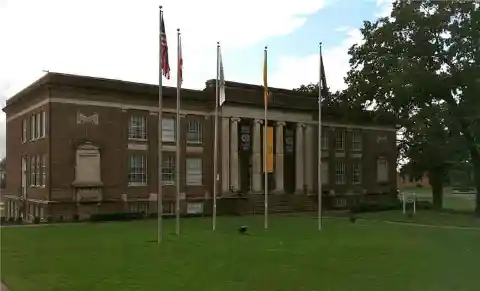
Located in Fairfield, Alabama, the Miles College Golden Bears can choose from 25 different possible degrees and spend time in the Centre of Academic Excellence that, strangely, lies under the auspices of the Director of National Intelligence. Founded in 1898, Miles College is associated with the Christian Methodist Episcopal Church (CME Church) and a member of the United Negro College Fund.
But details like that pale in comparison to the financial statistics for those who would like to attend Miles College. Students at the historic college have to shell out $22,500 a year and, upon graduation, tend not to fare well in the job market. The 20-year return on investment for the 17% of Miles College students who graduate turns out to be -$164,600.
University of South Carolina, Aiken


Founded as Russell Creek Academy, a Baptist institution, the Academy gradually developed its offerings and a four-year curriculum, becoming accredited as a college. With an expansion of graduate programs, in 1996 the college gained university status. Today, Campbellsville University currently enrolls more than 12,000 students and is open to students of all denominations. In the beautiful setting in Campbellsville, Kentucky, students at Campbellsville University can choose to either study in the School of Music, School of Education, or School of Art.
The choice of degrees is slim for the 12,000 students at the university, the majority (7,500) of whom are actually graduate students. And, for those who graduate, the chance for jobs is even slimmer. For a total of $143,000 over four years of education, students who graduate from Campbellsville University face the prospect of losing -$76,800 over the next 20 years.
College of the Ozarks
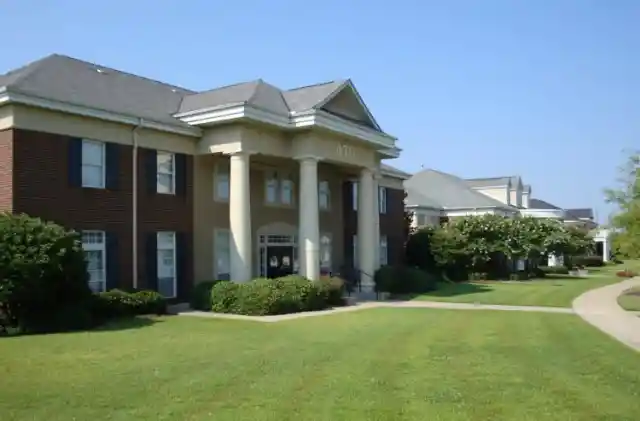
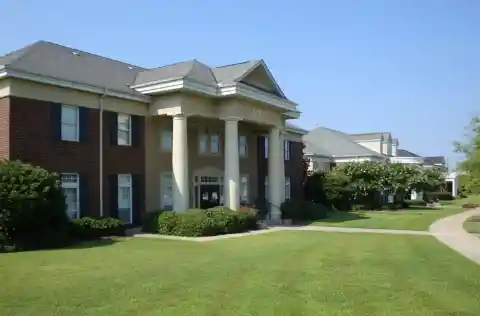
Part of the larger University of South Carolina institution, the University of South Carolina in Aiken, South Carolina has over 3,700 students and was ranked #1 amid regional Southern public colleges in U.S. News & World Report’s 2019 college guide. Located between Augusta, Georgia and Columbia, South Carolina, the school is popular for its smaller size, though it is also considered one of the fastest growing campuses in the USC system.
Students at the university get to enjoy a remarkably low ratio of faculty members to students for such a public university (15:1), but that still doesn’t seem to be enough to help the numbers of the school. University of South Carolina Aiken sees 42% of its students graduate on time. Unfortunately for those students, with an annual tuition cost of $32,000, University of South Carolina, Aiken costs them -$66,000 after 20 years.
Emmanuel College
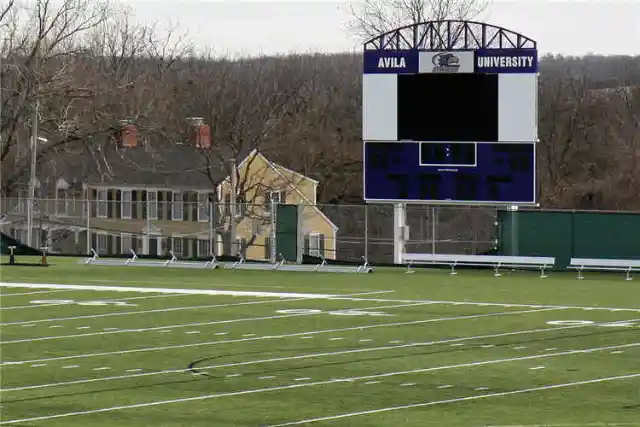

At the College of the Ozarks, students can choose whether to pay big dollars or work long hours. The college charges no tuition for full-time students who agree to also work. The work-study program at the college requires students to work 15 hours a week at an on-campus work station and two 40-hour work weeks during breaks. A summer work program is also available to cover room and board costs. The college refers to itself as “Hard Work U” and places an emphasis on “character” education.
All of that being said, for those who don’t feel like they can give up that kind of time to working, tuition costs are not for the faint of heart. Tuition costs over $28,000 a year, and the return on investment is low—just -$20,600 after 20 years. So you’ll probably want to pass on this small liberal arts college in Point Lookout, Missouri.
University of Montevallo
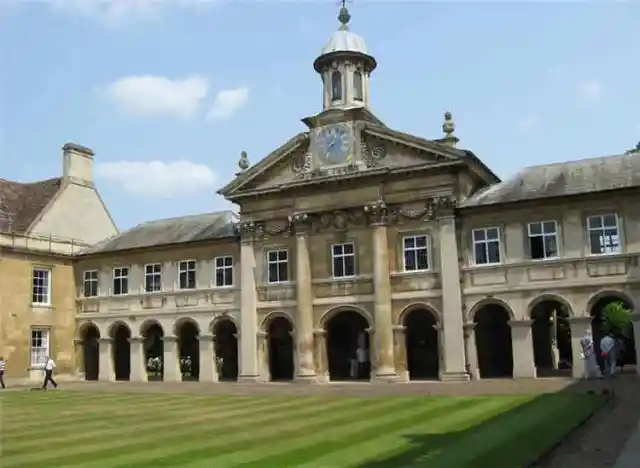
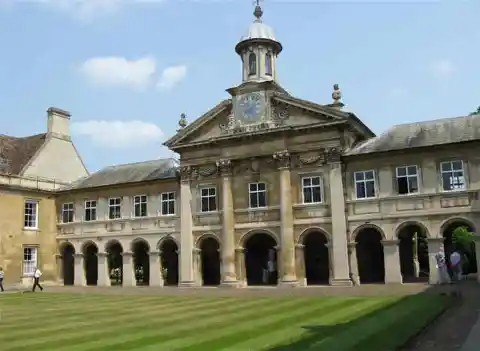
Emmanuel College is a private, Christian, liberal arts college in Franklin Springs, Georgia that’s affiliated with the International Pentecostal Holiness Church. Originally a high school before it was temporarily closed during the Great Depression, Emmanuel College has been offering college degrees since 1939 and continues to offer high school courses in English and math subjects as part of Georgia’s Move On When Ready Program.
Its history aside, the numbers for students at Emmanuel College aren’t terrible but are also far from good. For $28,000 a year, 44% of the 950 undergraduate students make it to graduation in six years. For the motivated students who manage to graduate in four years, they can expect to make a -$70,600 return on their investment after 20 years.
Florida Memorial University
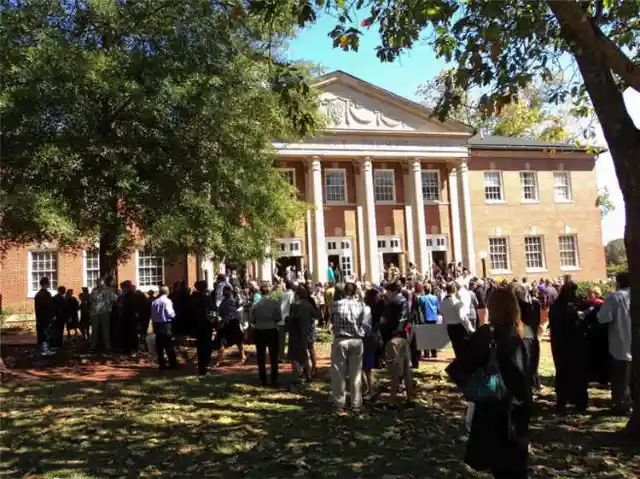
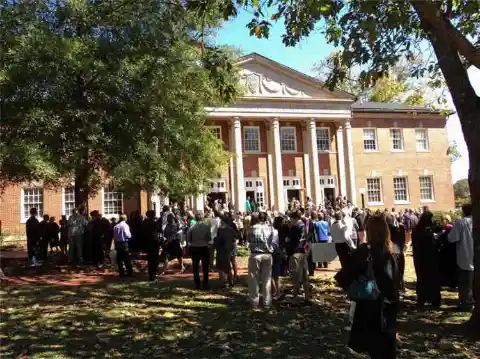
The University of Montevallo is a public university in Montevallo, Alabama. Founded in 1896, it is Alabama’s only public liberal arts college and a member of the Council of Public Liberal Arts Colleges. Generally speaking, the University of Montevallo is widely considered a solid school academically for its 2,600 students. An added bonus is that Montevallo University is in the geographic center of Alabama in an area rich with Civil War history.
The University of Montevallo also has some famous undergraduate traditions, like the Life Raft Debate where students get to watch professors make a case for their discipline and why they should be included on the theoretical raft to re-establish humanity after a nuclear war. But fun traditions aside, students still struggle when it comes down to the numbers at the University of Montevallo, especially if they’re out of state students. Out of state students pay nearly $36,000 a year and get an ROI of -$64,100.
Lees-McRae College


Associated with the Baptist Church, Florida Memorial University has been around since 1879, making it one of the oldest academic institutions in the state of Florida.
The university is a member of the United Negro College Fund and is historically related to Baptists, although it claims a focus on broader Christianity. Located in the area of Miami, Florida Memorial University has a good standing in the community; The university offers pre-college programs to reach out to the surrounding community. It addresses critical urban needs and helps more than 700 youth through the Lion’s Pre-College Experience Institute.
But despite its good works in Miami, the amount of money required of students in attendance at Florida Memorial University can hardly be considered a good work by those who have to pay it. Students at Florida Memorial University end up having to pay over $27,000 a year. And for all of that money, they can expect -$64,000 as their return on investment.
North Central University
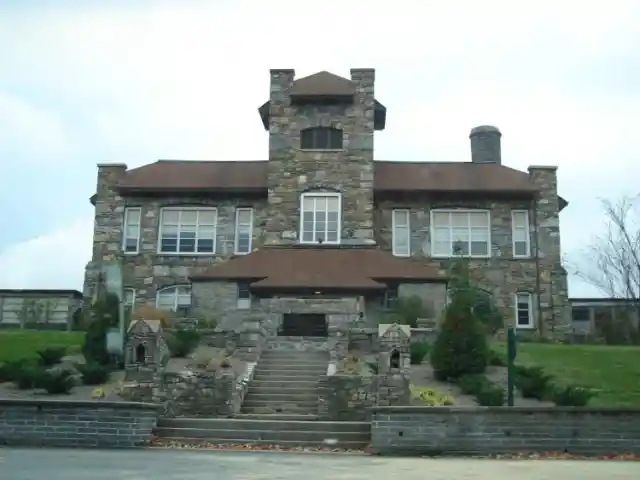
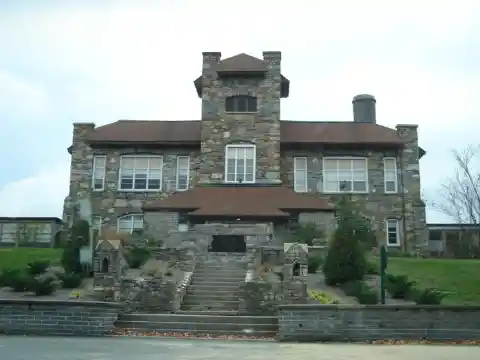
Lees-McRae College is a quaint private school that specializes in athletics and outdoor recreation. Celebrating 120 years in 2020, Lees-McRae College has the distinction of being the highest college east of the Mississippi in terms of elevation. The college sits at 3,720 feet above sea level, nestled in the Appalachian Mountains in Banner Elk, North Carolina. It’s also one of the few schools named after two women, Suzanna Lees and Elizabeth McRae.
In 2005, Lees-McRae became the first expansion site for New Opportunity School for Women, a program that helps educate and employ women in Appalachia. Out of about 1,000 students in the beautiful native stone buildings of Lees-McRae College, 38% of them can expect to graduate on time. What’s more, those 38% can also expect an ROI of -$56,400 after 20 years have passed.
Moore College of Art and Design
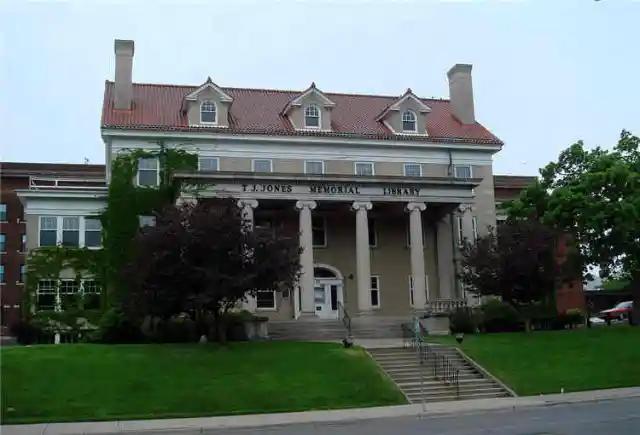

North Central University was founded in 1930 as a private Christian university in Minneapolis, Minnesota. The university is accredited by the Higher Learning Commission, and it’s also one of 17 Assemblies of God institutions of higher education in the United States with, oddly enough, 1,111 students. Because of its religious ties, the university enforces an alcohol and tobacco-free campus, as well as other measures like curfews and required chapel attendance.
Located in such chilly climes (as if that fact weren’t enough of a deterrent already), the numbers for North Central University will give any prospective students even more chills than the snow and wind. For $32,000 a year, students at North Central University who graduate on time can expect to see a return on investment of -$46,200 after 20 years.
Chatham University
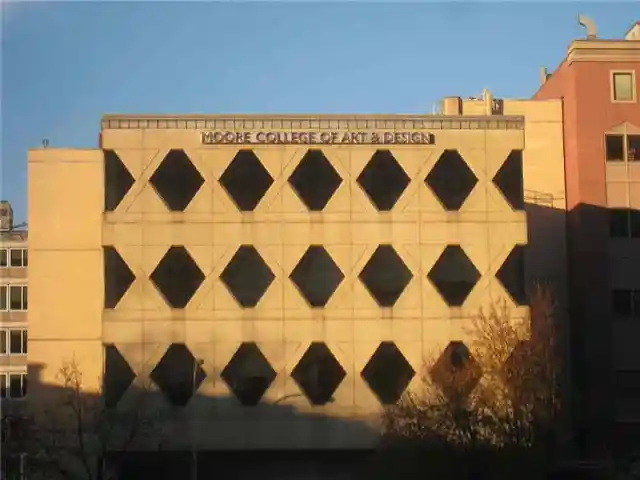

Moore College of Art and Design—MCAD for short—is an exclusive art school in Philadelphia, Pennsylvania. The college offers ten undergraduate BFAs, ranging from art history to the liberal arts. The undergraduate courses are only available to women at Moore College of Art and Design—it was founded in 1848 as the first art school in the United States for women—while graduate courses are co-educational.
With 500 undergraduates, Moore College of Art and Design sees 57% of its students graduate in four years. But now to the part you really care about: the money. According to PayScale, graduates of Moore College of Art and Design can expect an ROI of -$43,800. This is largely due to the fact that the total cost of four years of tuition at Moore College of Art and Design is a whopping $216,000 (or, in other words, $54,000 a year).

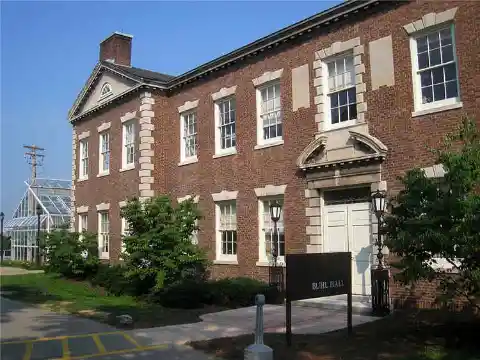
If you’ve ever wondered what school is closest to breaking even, then knowing about Chatham University might help you at the next trivia night you attend. Located in Pittsburgh, Pennsylvania, Chatham University has historically been a women-only college until just recently. The current university student population of 2,110 includes 1,002 undergraduate students and 1,108 graduate students, ranging from the bachelor’s level to the doctorate level.
The university is split into three distinct colleges: one for undergraduates, one for graduates, and one for continuing and professional studies. According to the Princeton Review, Chatham University has been considered the “Best College in the Northeast.” On average, students are expected to pay $48,000 a year for tuition. However, unlike some colleges with similar price points, the return on investment for graduates of Chatham University is a mere -$200.